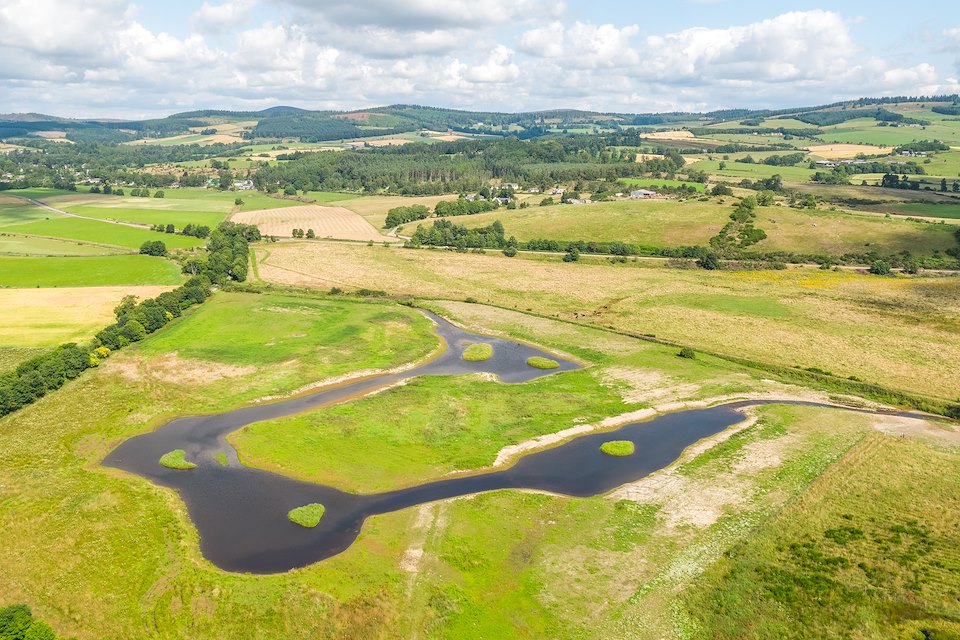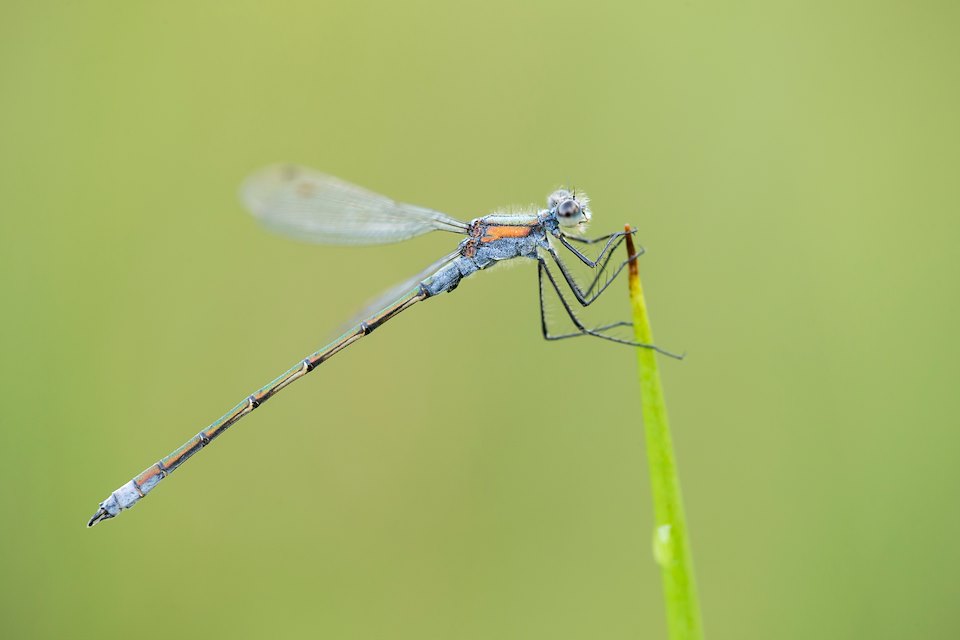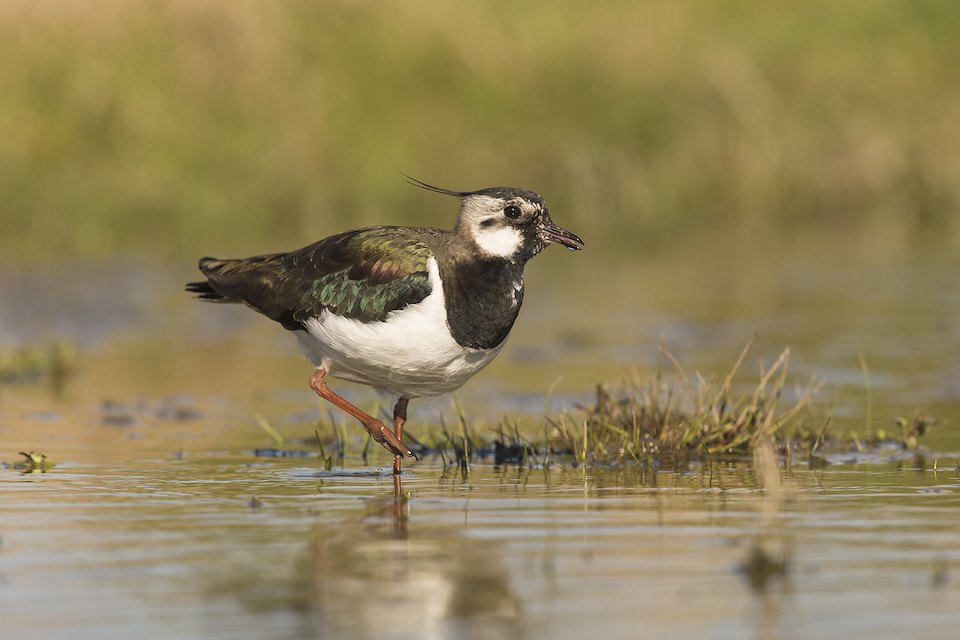A river runs through it
Across the world wetlands are disappearing three times faster than forests. With climate breakdown increasing the likelihood of heavy rainfall events, efforts across Scotland to reunite rivers with their natural floodplains and restore wetlands are paying dividends for both people and wildlife.

Insh Marshes
‘A river is not just water in a channel,’ emphasises Susan Cooksley from the Dee Catchment Partnership, as we stand beside the Beltie Burn in Aberdeenshire, ‘it’s all the nutrients and life that form the dynamic whole.’ Susan is keen to show us the results of a pioneering project to not only reunite a river with its floodplain, but also to encourage people to appreciate all the elements that make a river a living thing.
'A river is not just water in a channel,' says Susan Cooksley from the Dee Catchment partnership

Thanks to people like Susan, the way we look at rivers is changing. Historically, society’s single-minded focus on food production motivated the extensive drainage of wetland systems, including floodplains and their accompanying meadows and marshes, while rivers were straightened and constrained.
This straightened section of the River Dulnain in the Cairngorms, constrained by bunds to avoid flooding adjacent farmland, mirrors thousands of miles of Scotland’s simplified river systems.
This straightened section of the River Dulnain in the Cairngorms, constrained by bunds to avoid flooding adjacent farmland, mirrors thousands of miles of Scotland’s simplified river systems.
For more than a century, the Beltie Burn had, like so many watercourses in our agricultural landscapes, been reduced to an artificially straightened canal. The resulting conditions couldn’t have been much worse for fish and other river life. Confined by an embankment, water raced downstream, carving an ever deeper channel and reducing what had once been a meandering stream rich with life, to a sterile drainage chute.
The water is now free to spread out across its historical floodplain.
However, since the Beltie Burn has been ‘rewiggled’ – restoring the loops and bends that once twisted across the surrounding floodplain – the water is now shepherded along a more naturally convoluted course, alternating between stretches of faster and slower-moving water. This re-meandering process has increased the river’s capacity and boosted habitat complexity, with the water now free to spread out across its historical floodplain at times of exceptionally high flow, reducing scouring effects within the watercourse and easing pressure on downstream towns and villages.



As a result, almost at once, life has returned to the Beltie Burn. Fish recolonised the revitalised river within days, followed by a great procession of life, from lampreys to wading birds. The banks of the Beltie are now crowded with self-seeded alder, willows and wildflowers, bending in the breeze and thrumming with insects.
Elsewhere, efforts to reconnect rivers with their floodplains have been achieved by intercepting and dispersing water before it enters the main channel. On the Allan Water in Perthshire, Alison Baker, Restoration Director of the Atlantic Salmon Trust, explains how they’ve been working with the local landowner to hold the water on the floodplain for longer. This involved blocking some of the ditches leading down to the floodplain.
‘In times of high rainfall these ditches were discharging directly into the river, taking away all the nutrients and sediment, while also increasing the rate at which river levels would rise,’ says Alison. By blocking these ditches, Alison and her team have been able to divert water back onto the floodplain, where a network of newly restored scrapes and ponds intercept and retain it, raising the local water table and slowing the water’s eventual journey to the main channel. As a further bonus, when the water does finally discharge into the river, it is cleaner and carries a reduced sediment load.
‘Before we did this work, lots of species were in decline,’ says Alison, who has witnessed immediate benefits for wading birds and a plethora of other species, all taking advantage of the mosaic of newly-created habitats. Salmon don't spawn in this lower section of the river, but they do further up, while young parr and smolts pass through on their journey towards the sea.
‘Anything we can do to make the water as clean as possible, will of course help the salmon,’ says Alison, ‘and all the other species that live in the river too!’

The burgeoning wildlife has created opportunities for local communities too, with a network of volunteers carrying out regular bird counts. And all the excavation required at the Allan Water was undertaken by a young local digger driver, exemplifying the way such projects can galvanise new partnerships and foster the development of new skills without detracting from the land’s utility.
‘The land is still in productive use,’ says Alison. ‘Although there are areas of wetter ground, the farmer can still graze cattle and it can still be cut for hay, so it's not as if the land has been abandoned. It's just working more with nature.’
Importantly, slowing the rate that water enters the river also reduces flood risk. ‘Flooding events are complex,’ explains Alison, ‘but if we can reduce the amount of water moving at any given time by holding it back within the floodplain, we are less likely to see flooding downstream.’

Floodplain restoration on the Allan Water in Perthshire.
The real power of these projects lies in showing us what is possible.
With climate breakdown increasing the likelihood of heavy rainfall events, Alison knows that failing to reconnect more of our rivers with their floodplains will mean more communities at risk from catastrophic flooding. For her, the need to reintegrate whole river systems is as clear as it is urgent. ‘Anything that we can do to stop that water rushing down our rivers will make it better for everybody.’
Back on the Beltie Burn, the impact of the re-meandering work is being meticulously measured and recorded. The reconnected wetlands are already retaining more water, supporting greater biodiversity and will soon begin storing carbon, while the recovering reedbeds should help denitrify agricultural run-off, reducing river pollution. But the wider impact of these projects is inevitably limited by their size.
Back on the Beltie Burn, the impact of the re-meandering work is being meticulously measured and recorded. The reconnected wetlands are already retaining more water, supporting greater biodiversity and will soon begin storing carbon, while the recovering reedbeds should help denitrify agricultural run-off, reducing river pollution. But the wider impact of these projects is inevitably limited by their size.
On their own, the Beltie Burn and Allan Water are just postage stamp-sized sections of river, but their real power lies in showing us what is possible. Together, they offer a compelling proof of concept, demonstrating what we could achieve if we could replicate floodplain restoration work at scale. Today, we understand that we need healthy river systems and sustainable food production. Happily, there’s no reason we can’t have both.
#Riverwoods
Find out more about the Riverwoods initiative

